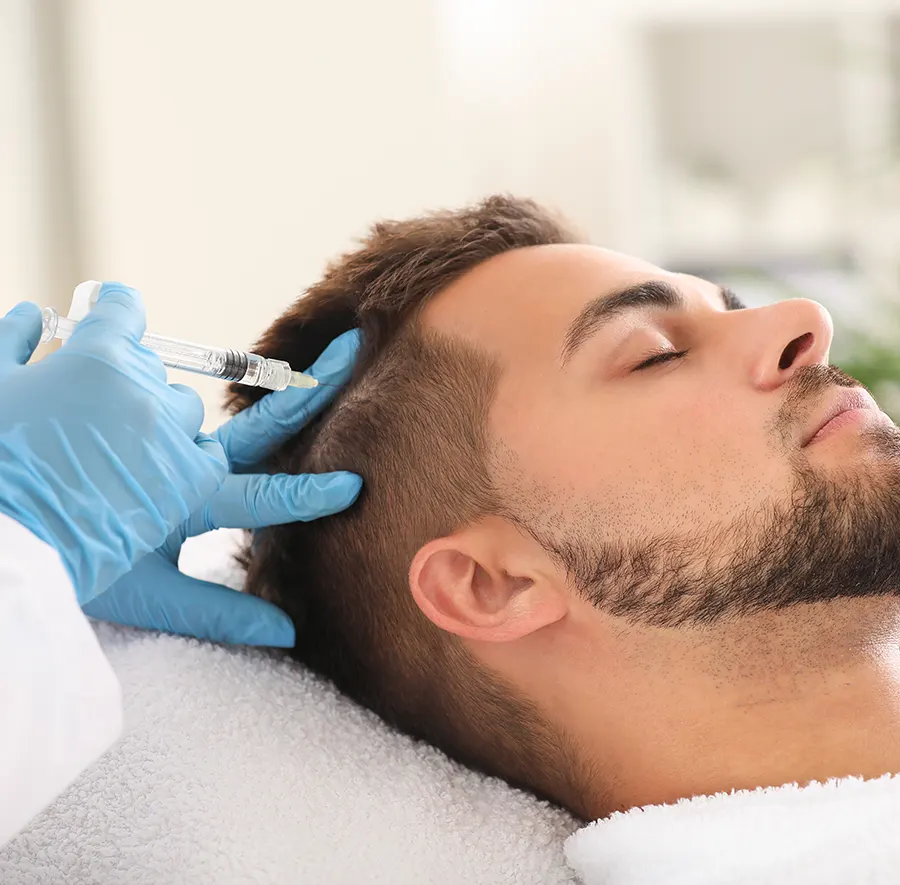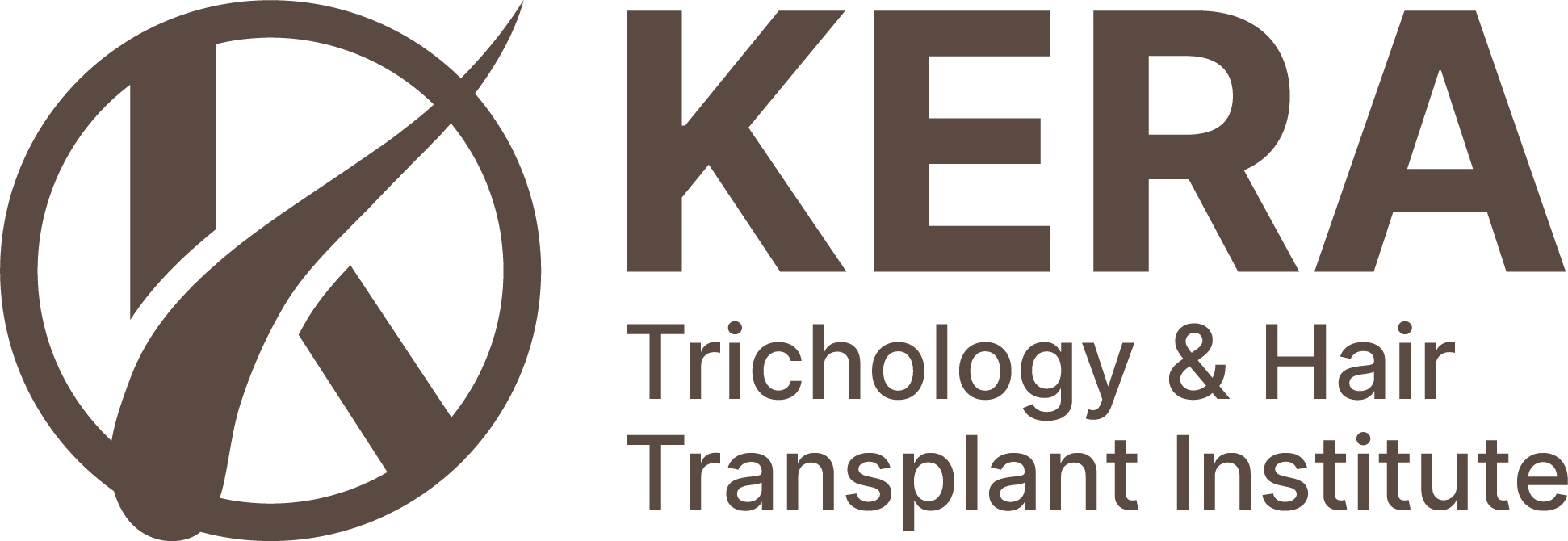Share on socials:
What is role of PRP in hair growth
Hair loss can be a distressing experience for both men and women. Whether it’s a receding hairline, thinning at the crown, or diffused hair fall, losing hair can affect your self-confidence and overall quality of life. Thankfully, advancements in regenerative medicine have introduced promising solutions — and one of the most popular among them is PRP therapy.
In this comprehensive guide, brought to you by KERA, we explore the science, process, benefits, and role of PRP (Platelet-Rich Plasma) therapy in promoting natural hair growth.

What Is AGA (Androgenetic Alopecia)?
Androgenetic Alopecia is a genetic condition that causes progressive hair thinning and baldness. It affects both men and women, though the patterns differ. AGA is the most common cause of hair loss worldwide.
In men: It usually begins with a receding hairline or thinning crown.
In women: Diffuse thinning across the scalp, especially the crown.
Early detection and proper classification are key to managing AGA effectively.
What is PRP Therapy?
PRP stands for Platelet-Rich Plasma — a concentration of platelets derived from your own blood. Platelets are rich in growth factors that are essential for healing and tissue regeneration. When injected into the scalp, these growth factors stimulate dormant hair follicles, improve blood circulation, and encourage new hair growth.
The Science Behind PRP
Here’s how it works:
- Blood is drawn from your arm.
- It’s spun in a centrifuge to separate the plasma.
- The platelet-rich plasma is extracted and injected into your scalp.
Growth factors such as PDGF (Platelet-Derived Growth Factor), VEGF (Vascular Endothelial Growth Factor), and TGF (Transforming Growth Factor) promote cell regeneration, collagen production, and hair follicle repair.
Who Can Benefit from PRP?
PRP therapy is suitable for:
- Early-stage androgenetic alopecia (AGA)
- Receding hairlines
- Receding hairlines
- Receding hairlines
- Hair restoration support after a transplant
It works best for patients who still have active but weakened hair follicles. The sooner you begin, the better your results.
PRP vs Other Hair Growth Treatments
| Treatment | Invasiveness | Natural Approach | Side Effects | Long-Term Results |
|---|---|---|---|---|
| PRP | Minimally invasive | 100% Natural | Minimal (mild redness) | Yes |
| Minoxidil | Topical | Chemical | Scalp irritation | Temporary |
| Finasteride | Oral | Synthetic | Hormonal effects | Only while using |
| Hair Transplant | Surgical | Natural (own follicles) | Recovery time | Permanent |
The PRP Procedure at Kera Hair Clinic
Step 1: Consultation & Diagnosis
Every treatment begins with a thorough scalp analysis and hair loss grading using tools like trichoscopy and dermoscopy.
Step 2: Blood Draw & Processing
A small sample of your blood is taken and spun in a centrifuge to isolate the platelet-rich plasma.
Step 3: Local Anaesthesia
A topical anaesthetic is applied to ensure your comfort.
Step 4: PRP Injections
Using micro-needles, PRP is strategically injected into areas experiencing hair thinning or hairline recession.
Step 5: Aftercare
You can go home the same day. Minor swelling or redness may occur but usually subsides in 24–48 hours.
Frequency and Results
PRP therapy is typically done in sessions:
- Initial phase: 3–4 sessions at intervals of 4–6 weeks
- Maintenance: 1 session every 4–6 months
When to expect results:
- Reduced hair fall after 1st or 2nd session
- Visible thickening of hair by the 3rd month
- Optimal results in 6–9 months
Is PRP Safe?
Yes, PRP is extremely safe since it uses your own blood, minimising the risk of allergies or infections. At KERA, the procedure is performed under sterile conditions by experienced medical professionals, ensuring patient safety and comfort.
Combination Treatments for Better Results
PRP works even better when combined with:
- Hair transplant (to boost survival and growth of implanted follicles)
- Exosome therapy (to enhance regenerative effects)
- Low-level laser therapy (LLLT)
- Medications like Minoxidil and Biotin
Our experts personalise every treatment plan based on your hair condition and goals.
Who Should Avoid PRP?
Although PRP is safe for most people, it may not be suitable for:
- Patients with blood disorders or low platelet count
- Patients with blood disorders or low platelet count
- Active scalp infections
- Pregnant or breastfeeding women (case-by-case basis)
Why Choose Kera Hair Clinic for PRP?
- Advanced centrifuge systems for higher platelet concentration
- Advanced centrifuge systems for higher platelet concentration
- Advanced centrifuge systems for higher platelet concentration
- Clean, comfortable, and hygienic environment
With hundreds of successful cases and happy clients across Gujarat and India, KERA has become a name trusted by those who want natural, effective, and long-lasting hair regrowth solutions.
Patient Testimonials
After three PRP sessions at Kera, my hair fall stopped and my hairline looked fuller. I’m so glad I started early!
Kera’s PRP therapy was painless and very effective. Their care team is professional and comforting

Conclusion
Hair loss doesn’t have to be permanent. PRP therapy is a safe, natural, and highly effective way to stimulate hair growth and prevent further thinning. If you’ve noticed a receding hairline or thinning scalp, now is the time to act.
Take the First Step Today!
Don’t let hair loss define you. Whether you’re looking to restore your hairline, achieve fuller density, or regain confidence, KERA is here to help. Our expert team is dedicated to providing cutting-edge hair restoration solutions tailored to your needs.
For Those Inspired by Our Mission, Here’s How You Can Stay Connected and Support Us
Follow us on Instagram (@keratrichology) to stay updated on the latest advancements in hair restoration, success stories, and expert tips. Help us spread awareness about the importance of early intervention and advanced treatments like DHI and PRP therapy.
By sharing your journey and educating others, you contribute to breaking the stigma around hair loss and encouraging people to take action. Let’s work together to inspire confidence and redefine hair restoration—one transformation at a time!
